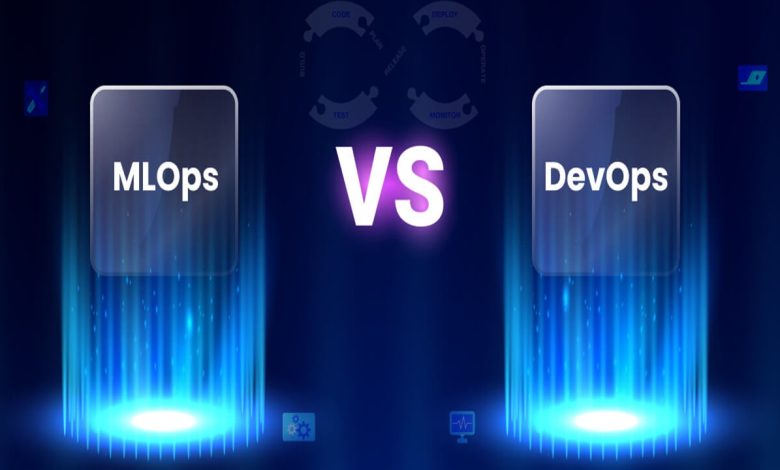Bridging DevOps and MLOps in Smart App Development

The rise of AI-powered applications has fundamentally changed the landscape of app development. Traditional DevOps practices focus on continuous integration, deployment, and monitoring of software. However, when apps incorporate machine learning models, an additional layer of complexity emerges: managing data pipelines, model training, versioning, and deployment. This is where MLOps comes into play.
Bridging DevOps and MLOps enables development teams to deliver intelligent, reliable, and scalable applications efficiently. This article explores strategies, architectures, and best practices for integrating DevOps and MLOps in smart app development.
Understanding DevOps and MLOps
1. DevOps
DevOps is a methodology that combines development and operations to automate software delivery and ensure reliability. Key principles include:
- Continuous Integration (CI): Automatically building and testing code.
- Continuous Deployment (CD): Deploying changes to production quickly and safely.
- Monitoring and Feedback: Using metrics to optimize performance and reliability.
DevOps emphasizes collaboration, automation, and rapid iteration—critical for modern app development.
2. MLOps
MLOps extends DevOps principles to machine learning workflows. It addresses challenges such as:
- Data Versioning: Tracking datasets used for training.
- Model Training and Validation: Ensuring reproducibility and accuracy.
- Model Deployment and Monitoring: Managing models in production and detecting drift.
MLOps ensures that AI components are as reliable and maintainable as the app’s core code.
Challenges in Bridging DevOps and MLOps
Integrating DevOps and MLOps requires navigating several unique challenges:
- Data Dependency: ML models depend on constantly evolving datasets. CI/CD pipelines must account for data validation and preprocessing.
- Model Drift: Over time, models may degrade in performance due to changes in user behavior or external factors.
- Testing Complexity: Unlike traditional code, testing ML models requires performance metrics like accuracy, precision, and recall.
- Infrastructure Requirements: ML workloads often need GPU acceleration, scalable storage, and orchestration frameworks.
Architectural Approaches
1. Unified Pipelines
Integrating DevOps and MLOps starts with unified CI/CD pipelines that manage both code and models. A typical pipeline includes:
- Data Ingestion & Preprocessing: Automated validation and transformation.
- Model Training & Testing: Using reproducible scripts and datasets.
- Deployment: Continuous delivery of both app updates and ML models.
- Monitoring: Tracking app performance, model accuracy, and system metrics.
Example Tools: Jenkins, GitHub Actions, GitLab CI, MLflow, Kubeflow, and TensorFlow Extended (TFX).
2. Containerization and Orchestration
Containers standardize deployment and ensure consistency across environments.
- Docker: Encapsulates app and model dependencies.
- Kubernetes: Orchestrates containers for scaling, monitoring, and fault tolerance.
Example: Deploying a recommendation engine in a container allows simultaneous updates of app code and model without downtime.
3. Model Versioning and Rollbacks
Just like software, ML models need version control. Techniques include:
- Storing models with metadata about training data, hyperparameters, and performance metrics.
- Implementing canary deployments to test new models on a subset of users.
- Rolling back to previous models if accuracy drops in production.
Example: An e-commerce app might test a new product recommendation model on 10% of traffic before a full rollout.
Best Practices for Bridging DevOps and MLOps
- Automate Everything: CI/CD for code, and continuous training and evaluation for models.
- Monitor Models in Production: Track drift, bias, and accuracy using dashboards and alerts.
- Collaborate Across Teams: Developers, data scientists, and operations must communicate effectively.
- Implement Reproducibility: Keep datasets, model artifacts, and code versioned to reproduce results.
- Use Feature Stores: Centralize features used by models to ensure consistency between training and inference.
Case Studies
1. Spotify
- Implementation: Uses MLOps pipelines for music recommendation models integrated with DevOps CI/CD for app updates.
- Impact: Real-time personalized recommendations with high reliability and fast iteration cycles.
2. Uber
- Implementation: Uber’s Michelangelo platform integrates ML model lifecycle management with standard DevOps practices.
- Impact: Enables deployment of dynamic pricing, ETA predictions, and fraud detection at scale.
3. LinkedIn
- Implementation: ML models for job recommendations, news feeds, and ad targeting are deployed via pipelines that merge DevOps and MLOps practices.
- Impact: Seamless model updates and minimal downtime while maintaining high user engagement.
Tools and Technologies
Bridging DevOps and MLOps relies on a combination of tools:
- CI/CD: Jenkins, GitHub Actions, GitLab CI
- ML Lifecycle Management: MLflow, Kubeflow, TFX
- Monitoring: Prometheus, Grafana, Seldon Core
- Containerization: Docker, Kubernetes
- Feature Management: Feast, Tecton
Using these tools effectively ensures automation, scalability, and reliability of both the app and AI components.
Future Trends
- AI-Driven DevOps: Automated code reviews, testing, and deployment decisions using AI.
- Federated MLOps: Deploying models across devices while maintaining privacy.
- Explainable MLOps: Monitoring not only performance but also the ethical and explainable behavior of models in production.
- Edge MLOps: Managing models on edge devices to combine low latency with centralized monitoring.
Conclusion
Bridging DevOps and MLOps is essential for building smart, reliable, and scalable applications. By integrating AI lifecycle management with software engineering practices, development teams can:
- Accelerate app and model deployment.
- Maintain high-quality, reproducible AI models.
- Monitor both software and model performance seamlessly.
- Scale applications efficiently across users, devices, and geographies.
In the era of intelligent apps, developers who master DevOps + MLOps integration will be equipped to deliver next-generation user experiences that are responsive, personalized, and robust.

